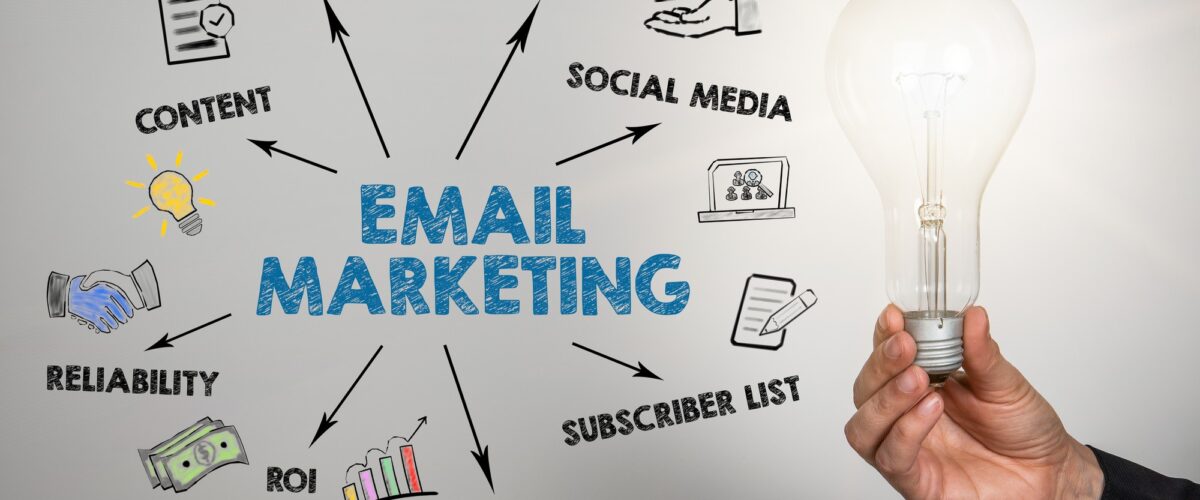
Email marketing is a potent tool for businesses to engage with their target audience, nurture leads, and drive conversions. In this blog post, we’ll delve into the fundamentals of email marketing and its key components.
Introduction: Begin by explaining the significance of email marketing in the digital age. Mention its role in building and maintaining customer relationships.
The Basics of Email Marketing:
- Define what email marketing is and its primary objectives.
- Discuss the different types of emails, such as newsletters, promotional emails, and transactional emails.
Building an Email List:
- Explain the importance of a quality email list.
- Describe strategies for growing your email subscriber base, including opt-in forms and lead magnets.
Segmentation and Personalization:
- Highlight the benefits of segmenting your email list based on demographics, behavior, or preferences.
- Discuss how personalization can boost open rates and conversions.
Creating Compelling Email Content:
- Offer tips on crafting attention-grabbing subject lines and compelling email copy.
- Discuss the importance of visual elements like images and videos.
Email Automation:
- Introduce the concept of email automation and its advantages.
- Provide examples of automated email campaigns, such as welcome emails and drip campaigns.
Measuring Email Marketing Success:
- Explain key email marketing metrics like open rate, click-through rate (CTR), conversion rate, and unsubscribe rate.
- Discuss the role of A/B testing in optimizing email campaigns.
Compliance and Privacy:
- Touch upon email marketing regulations, such as GDPR and CAN-SPAM.
- Emphasize the need for obtaining proper consent and respecting subscribers’ privacy.
Email Marketing Best Practices:
- Summarize best practices for creating effective email campaigns, including mobile optimization and accessibility.
Case Studies:
- Share success stories or examples of businesses that have achieved significant results through email marketing.
Conclusion: Summarize the main points and reiterate the value of email marketing in modern digital marketing strategies.
Navigating the World of Digital Marketing
Digital marketing encompasses a wide range of online strategies and tactics to promote products or services. In this blog post, we’ll provide an overview of digital marketing and its various components.
Introduction: Explain the shift from traditional to digital marketing and the reasons behind its growing popularity.
What Is Digital Marketing?:
- Define digital marketing and its scope.
- Mention its primary goals, such as increasing brand awareness and driving online sales.
Key Components of Digital Marketing:
- Discuss the core components of digital marketing, including search engine optimization (SEO), content marketing, social media marketing, email marketing, pay-per-click (PPC) advertising, and more.
SEO and Content Marketing:
- Explain the importance of SEO in improving a website’s visibility in search engine results.
- Describe how content marketing ties into SEO and its role in providing valuable information to the audience.
Social Media Marketing:
- Discuss the significance of social media platforms in digital marketing.
- Provide insights into strategies for building a strong social media presence.
Email and Automation:
- Reiterate the value of email marketing as an integral part of digital marketing.
- Explain how automation can streamline email campaigns and improve efficiency.
Paid Advertising (PPC):
- Introduce PPC advertising and platforms like Google Ads and Facebook Ads.
- Discuss the benefits of pay-per-click advertising, such as immediate visibility.
Analytics and Data:
- Highlight the role of data and analytics in digital marketing.
- Explain how businesses can use data to make informed decisions and optimize their strategies.
The Digital Marketing Funnel:
- Describe the stages of the digital marketing funnel, from awareness to conversion.
- Discuss the strategies and tactics relevant to each stage.
Challenges in Digital Marketing:
- Mention common challenges in the digital marketing landscape, such as fierce competition and algorithm changes.
- Provide insights into overcoming these challenges.
Conclusion: Summarize the key takeaways and emphasize the dynamic nature of digital marketing, requiring adaptability and continuous learning.
These two blog posts can serve as introductory guides to email marketing and digital marketing, offering readers a solid foundation in these essential areas of modern marketing.
